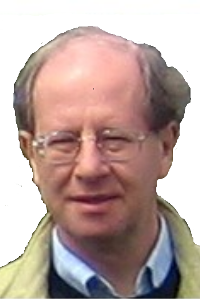| Pages in topic: [1 2] > | About double quotes, when should the form “” be allowed and avoided? Thread poster: lbone
|
|---|
lbone 
China
Local time: 07:46
Member (2006)
English to Chinese
+ ...
I hope this is the proper forum for this question, as I haven't found a specific English forum.
Double quotes in English were usually "..." to me. But now I can see more and more “...” in current English, such as in Wikipedia - http://en.wikipedia.org/wiki/Quotation_mark - where “...” and ‘...’ are listed ... See more I hope this is the proper forum for this question, as I haven't found a specific English forum.
Double quotes in English were usually "..." to me. But now I can see more and more “...” in current English, such as in Wikipedia - http://en.wikipedia.org/wiki/Quotation_mark - where “...” and ‘...’ are listed as the primary and secondary quotation marks for US and Canada.
I have to say I am somewhat confused.
So which version is correct, or what are the conditions to decide a proper form?
[Edited at 2015-01-14 11:10 GMT] ▲ Collapse
| | | | Tom in London
United Kingdom
Local time: 00:46
Member (2008)
Italian to English
The rules vary from country to country. In British English the standard format is "..."
If you are quoting something else, within a quotation, the format is
"Winston Churchill once said to me '.......' when we were driving through the desert".
I have a particularly annoying client who sends me text in Italian that uses chevron quotation marks («.......») and insists on me keeping them in the translation even though they are not used in English.
[E... See more The rules vary from country to country. In British English the standard format is "..."
If you are quoting something else, within a quotation, the format is
"Winston Churchill once said to me '.......' when we were driving through the desert".
I have a particularly annoying client who sends me text in Italian that uses chevron quotation marks («.......») and insists on me keeping them in the translation even though they are not used in English.
[Edited at 2015-01-14 11:26 GMT] ▲ Collapse
| | | | lbone 
China
Local time: 07:46
Member (2006)
English to Chinese
+ ...
TOPIC STARTER
Tom in London wrote:
The rules vary from country to country. In British English the standard format is "..."
If you are quoting something else, within a quotation, the format is
"Winston Churchill once said to me '.......' when we were driving through the desert".
I have a particularly annoying client who sends me text in Italian that uses chevron quotation marks («.......») and insists on me keeping them in the translation even though they are not used in English.
Hi Tom,
Thank you for the quick response.
It seems I haven't made it clear. My question is not the difference between US English and British English in using "..." and '...', but the difference between “...” and "..." as well as between ‘...’ and '...'.
Note that the characters “” and ‘’ I have question with are actually double-bytes characters, rather than the standard single byte characters " and '. It seems they look similar, but are actually different characters.
[Edited at 2015-01-14 11:38 GMT]
| | | | Mark
Local time: 01:46
Italian to English
| The answer is there. | Jan 14, 2015 |
That wikipedia article has a workable explanation of upright vs. typographic quotation marks under 'English and typical usage':Typographically, there are two types
[…]
much typed writing has vertical quotation marks.
| | |
|
|
|
| Quotes within quotes: British vs American practice. | Jan 14, 2015 |
Dear Colleagues,
Contrary to what is often thought (and written):
British English practice: '.....".....".......' (double inverted commas within single commas).
American practice: "....'......'....." (single commas within double commas).
http://www.oxforddictionaries.com/us/words/quotation-marks-american
... See more Dear Colleagues,
Contrary to what is often thought (and written):
British English practice: '.....".....".......' (double inverted commas within single commas).
American practice: "....'......'....." (single commas within double commas).
http://www.oxforddictionaries.com/us/words/quotation-marks-american
www.grammarbook.com/punctuation/quotes.asp
Plenty of references on the Internet but always useful to check the standard authoritative sources such as 'A Dictionary of Modern English Usage' by H.W. Fowler, Oxford University Press (1950), page 570.
[Edited at 2015-01-14 11:51 GMT]
[Edited at 2015-01-14 12:21 GMT] ▲ Collapse
| | | | Tom in London
United Kingdom
Local time: 00:46
Member (2008)
Italian to English
Elena Booth wrote: Dear Colleagues, Contrary to what is often thought (and written): English practice: '.....".....".......' (double inverted commas within single commas). American practice: "....'......'....." (single commas within double commas). http://www.oxforddictionaries.com/us/words/quotation-marks-american www.grammarbook.com/punctuation/quotes.asp Plenty of references on the Internet but always useful to check the standard authoritative sources such as 'A Dictionary of Modern English Usage' by H.W. Fowler, Oxford University Press (1950), page 570. [Edited at 2015-01-14 11:51 GMT]
What you call "the English practice" is not what I was taught at school and (fortunately) is not something I have ever seen in print in the hundreds, thousands, and quite possibly millions of texts I've ever read.
[Edited at 2015-01-14 11:59 GMT]
| | | | | Apologies, just noticed that the question was about a different matter. | Jan 14, 2015 |
Elena Booth wrote: Dear Colleagues, Contrary to what is often thought (and written): English practice: '.....".....".......' (double inverted commas within single commas). American practice: "....'......'....." (single commas within double commas). http://www.oxforddictionaries.com/us/words/quotation-marks-american www.grammarbook.com/punctuation/quotes.asp Plenty of references on the Internet but always useful to check the standard authoritative sources such as 'A Dictionary of Modern English Usage' by H.W. Fowler, Oxford University Press (1950), page 570. [Edited at 2015-01-14 11:51 GMT]
Precisely the point. Contrary to what one thought, was taught or remembers.
However both answers are irrelevant to the question asked.
| | | | Neptunia
Local time: 01:46
Italian to English
| smart quotes | Jan 14, 2015 |
I think you might be noticing what is essentially a font choice or typographic issue. Curly quotes that point in to the quoted text are considered more legible than the straight variety which derive from typewriter days. Virtually all published material these days would use curly quotes and it is only bare-bones sans serif fonts that have only the straight option, angled or not. Curly quotes are usually only an issue when Word creates them bending the wrong way -- the not-so-smart smart quotes. ... See more I think you might be noticing what is essentially a font choice or typographic issue. Curly quotes that point in to the quoted text are considered more legible than the straight variety which derive from typewriter days. Virtually all published material these days would use curly quotes and it is only bare-bones sans serif fonts that have only the straight option, angled or not. Curly quotes are usually only an issue when Word creates them bending the wrong way -- the not-so-smart smart quotes.
This site seems to cover the issue well:
http://practicaltypography.com/straight-and-curly-quotes.html
It makes a good point at the end that one major exception to always using curly smart quotes is in computer code. ▲ Collapse
| | |
|
|
|
| Style preference | Jan 14, 2015 |
As far as I understand it, this comes down to preference. I have one client who specifies one of these styles in their style guide and another who specifies the other. I'm referring here to both the "..'...'..." question and the use of "smart quotes" (I think that's what the original poster was talking about).
Last year Steven Pinker published a brilliant book on "correct English" called "A Sense of Style". I highly recommend it. It doesn't deal with "smart quotes", but it does deal... See more As far as I understand it, this comes down to preference. I have one client who specifies one of these styles in their style guide and another who specifies the other. I'm referring here to both the "..'...'..." question and the use of "smart quotes" (I think that's what the original poster was talking about).
Last year Steven Pinker published a brilliant book on "correct English" called "A Sense of Style". I highly recommend it. It doesn't deal with "smart quotes", but it does deal with prescriptive and descriptive grammar and the problem of so-called "grammar Nazis" (and whether "...'...'..." or '..."..."...' is correct). There is also a lot of lively discussion on the internet about typographer's needs and how these interact with language and grammar use in the "real world".
I tend to adhere to my own style unless a client specifically asks me to follow their own.
I've always been too busy to look more into the subject. Do you dislike "smart quotes" because they take up more space in a particular context? ▲ Collapse
| | | | Erik Freitag 
Germany
Local time: 01:46
Member (2006)
Dutch to German
+ ...
| Curly vs. straight quotations marks | Jan 14, 2015 |
I'm far from being a reliable source when it comes to giving advice about the English language (or any other language than German), but seeing that your question has so far not been adressed (let alone answered), I might as well chime in and say this:
As fas as I know, this is not a question of usage in different languages, but of good typography - there is actually no good reason to use straight quotes in any language, other than when curly ones aren't available (which used to be t... See more I'm far from being a reliable source when it comes to giving advice about the English language (or any other language than German), but seeing that your question has so far not been adressed (let alone answered), I might as well chime in and say this:
As fas as I know, this is not a question of usage in different languages, but of good typography - there is actually no good reason to use straight quotes in any language, other than when curly ones aren't available (which used to be the case on typewriters and early computers).
In other words: Whenever you're using a straight quotation mark, no matter what your target language is, you're most probably making a typographical (and hence minor) mistake.
[Bearbeitet am 2015-01-14 12:34 GMT]
[Bearbeitet am 2015-01-14 12:34 GMT] ▲ Collapse
| | | | Russell Jones 
United Kingdom
Local time: 00:46
Italian to English
| Wikipedia etc. | Jan 14, 2015 |
Wikipedia says (for English): "Curved quotation marks are usually used in manuscript and typeset text. Because typewriter and computer keyboards lack keys to directly enter typographic quotation marks, much typed writing has vertical quotation marks. The "smart quotes" feature in some computer software can convert vertical quotation marks to curly ones, but sometimes does so imperfectly."
I find that Wordfast Classic changes curly ones to vertical (possibly because I haven't bothere... See more Wikipedia says (for English): "Curved quotation marks are usually used in manuscript and typeset text. Because typewriter and computer keyboards lack keys to directly enter typographic quotation marks, much typed writing has vertical quotation marks. The "smart quotes" feature in some computer software can convert vertical quotation marks to curly ones, but sometimes does so imperfectly."
I find that Wordfast Classic changes curly ones to vertical (possibly because I haven't bothered to explore the optional settings), but MS offers advice on settings for Word etc. here: https://support.office.com/en-ca/article/Change-curly-quotes-to-straight-quotes-and-vice-versa-017963a0-bc5f-486b-9c9d-0ec511a8fb8f ▲ Collapse
| | | |
As a translator, I've always assumed that I ought to use smart quotes or curly quotes, because I assume that it is easier for the people down the line to convert these into straight quotes than the reverse.
I would think that curly quotes have always been the general standard for anything in print. I've honestly never paid much attention to what is more common online.
"xxx 'yyy' xxx" and 'xxx "yyy" xxx' are both established British conventions. The first is recommended ... See more As a translator, I've always assumed that I ought to use smart quotes or curly quotes, because I assume that it is easier for the people down the line to convert these into straight quotes than the reverse.
I would think that curly quotes have always been the general standard for anything in print. I've honestly never paid much attention to what is more common online.
"xxx 'yyy' xxx" and 'xxx "yyy" xxx' are both established British conventions. The first is recommended by Oxford, for example, and the second is standard among newspapers, for example.
In the US, "xxx 'yyy' xxx" is almost always correct, but there are some variations in specific fields. ▲ Collapse
| | |
|
|
|
Giles Watson 
Italy
Local time: 01:46
Italian to English
In memoriam | Oxford and Cambridge | Jan 14, 2015 |
On the subject of quotation marks within quotation marks, it's probably just as well to bear in mind that this isn't really a UK vs US issue, although it may look like one.
Elena rightly points out that OUP recommendations on double and single quotation marks differ from the standard American practice (e.g. Chicago Manual of Style, 15th ed., p.453). But Tom is also right because Fowler and the more recent Oxford Style Manual are not universally adhered to in the UK. For example, th... See more On the subject of quotation marks within quotation marks, it's probably just as well to bear in mind that this isn't really a UK vs US issue, although it may look like one.
Elena rightly points out that OUP recommendations on double and single quotation marks differ from the standard American practice (e.g. Chicago Manual of Style, 15th ed., p.453). But Tom is also right because Fowler and the more recent Oxford Style Manual are not universally adhered to in the UK. For example, the authoritative Cambridge University Press recommends single-within-double quotation marks. In any case, even the OSM only insists on double-within-single quotes for "academic books", noting that the "order is often reversed in newspapers, and uniformly in the US" (p.148).
Historically, English quotation marks have always been curly (does anyone write straight ones by hand?); as Erik says, the straight kind are a typewriter/computer manufacturer's workaround.
The moral of the story is that unless you (or your client) nominate an in-house or commercial style guide as a gold standard, you are are leaving the door open for all sorts of passionate, but ultimately pointless, arguments.
[Edited at 2015-01-14 15:43 GMT] ▲ Collapse
| | | | Neil Coffey 
United Kingdom
Local time: 00:46
French to English
+ ...
| 1950? Seriously? | Jan 14, 2015 |
Elena Booth wrote:
Plenty of references on the Internet but always useful to check the standard authoritative sources such as 'A Dictionary of Modern English Usage' by H.W. Fowler, Oxford University Press (1950), page 570.
Genuinely curious: why on earth would you possibly care what somebody in 1950 had to say about typographical practice???? Do you get a lot of clients asking you to use the typographical standards of the 1950s?
| | | | Sarah McDowell 
Canada
Local time: 18:46
Member (2012)
Russian to English
+ ...
| Good article about quotation marks | Jan 14, 2015 |
The following link is to a good wikipedia article about quotation marks in many languages
http://en.wikipedia.org/wiki/Quotation_mark
Note that correct English quotation marks are “…” curly ones. The incorrect straight marks are " " and they are called insertion marks used in HTML and other computer languages.
| | | | | Pages in topic: [1 2] > | To report site rules violations or get help, contact a site moderator: You can also contact site staff by submitting a support request » About double quotes, when should the form “” be allowed and avoided? | Protemos translation business management system | Create your account in minutes, and start working! 3-month trial for agencies, and free for freelancers!
The system lets you keep client/vendor database, with contacts and rates, manage projects and assign jobs to vendors, issue invoices, track payments, store and manage project files, generate business reports on turnover profit per client/manager etc.
More info » |
| | CafeTran Espresso | You've never met a CAT tool this clever!
Translate faster & easier, using a sophisticated CAT tool built by a translator / developer.
Accept jobs from clients who use Trados, MemoQ, Wordfast & major CAT tools.
Download and start using CafeTran Espresso -- for free
Buy now! » |
|
| | | | X Sign in to your ProZ.com account... | | | | | |














